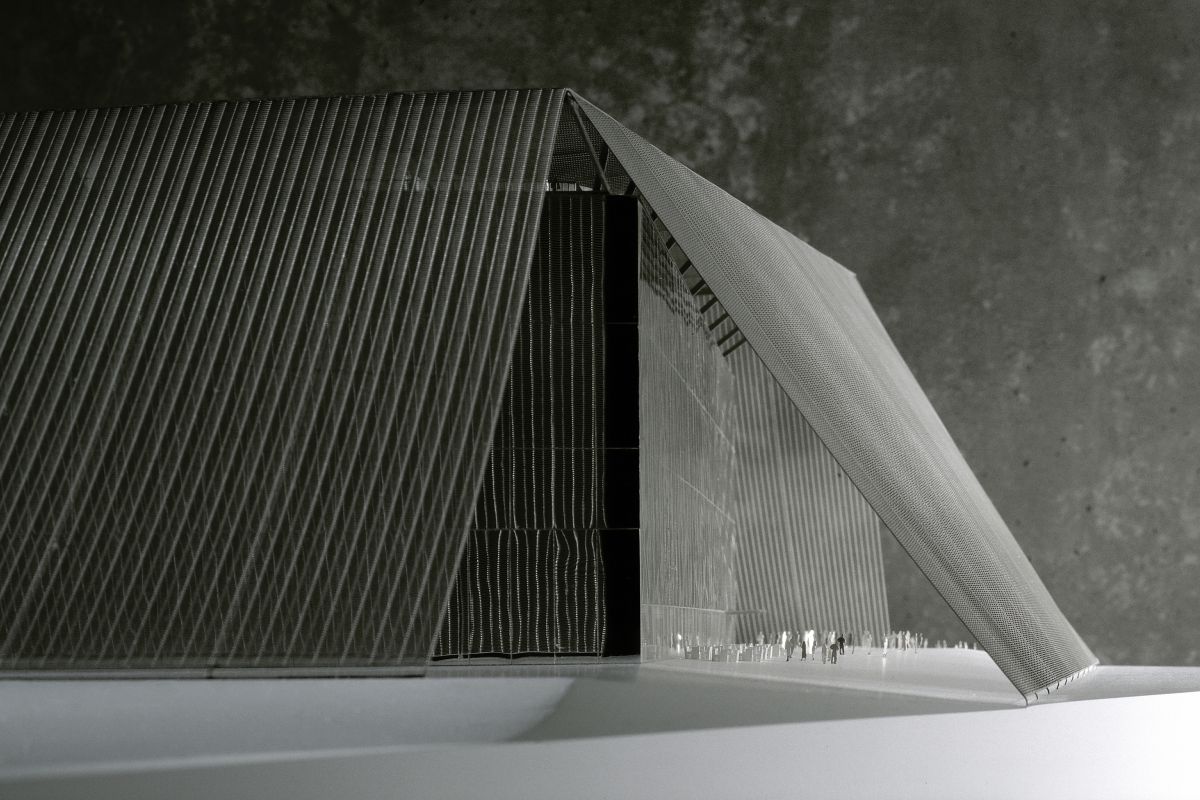
SUIVANT
2003 | 2003
Georges Pompidou Centre
Metz, France
The first branch of the Centre Pompidou is envisaged as a simple
shelter, a sort of nomadic-like architecture and consists of an immense metallic veil stretched over the museum and partially open at its for
corners. The tent creates an “in-between” zone that piques the curiosity of passers-by, who then want to know what it conceals. The “hidden
object” the visitor expects to find upon entering, slips behind a glass
wall covered with an ultra-thin layer of silver. This two-way mirror reflects
the image of what it covers, while still allowing one to perceive
silhouettes circulating inside the edifice. At the center of the building, a huge
nave houses monumental works of art. The exhibition galleries, organized
in a sort of crown around the nave, are designed to maximize the number of
itineraries. Finally, this “dematerialized” construction is determinedly turned outward to the city as the plaza and the terrace, positioned
between the roof and the metallic cover, which offers a panoramic view
of the surrounding neighborhood.
client Communauté d’agglomération de Metz métropole (CA2M)
architect Dominique Perrault Architecte, Paris
engineering Coyne et Bellier (structure), Jean Schmit (building services), Claude Ripeau (economist), Jean-Paul Lamoureux (lighting and acoustics)
location Metz, France
site area 28 100 m²
built area 15 390 m²
built volume 150 000 m³
architect Dominique Perrault Architecte, Paris
engineering Coyne et Bellier (structure), Jean Schmit (building services), Claude Ripeau (economist), Jean-Paul Lamoureux (lighting and acoustics)
location Metz, France
site area 28 100 m²
built area 15 390 m²
built volume 150 000 m³







